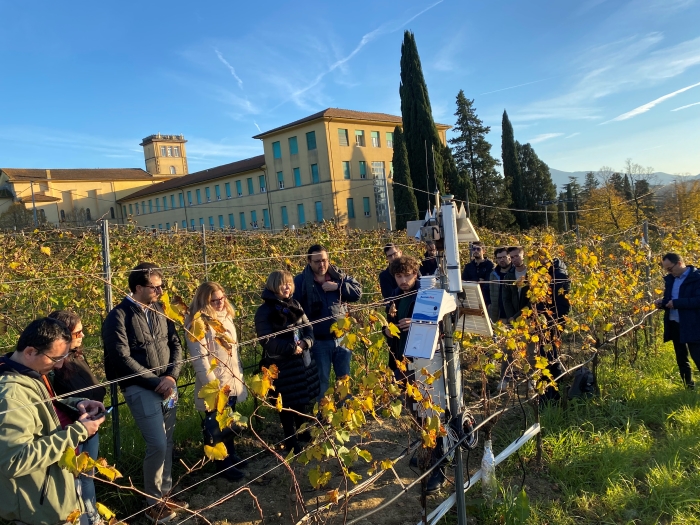ESA boosts Italian agriculture and disaster response through 5G satellites

Satellite 5G capabilities are growing in their importance across businesses and society. ESA’s 5G-HOST-SAT (5G Hub Over-The-Air Vertical Segment Validations) project is working to support the digitisation and greening of the agriculture, through the enhancement of existing services with 5G and satellite connectivity.
Part of ESA’s Space for 5G/6G & Sustainable Connectivity programme line, the project led by Nextworks Srl, with MBI Srl, ROMARS Srl and Hewlett Packard Enterprise develops an integrated 5G satellite terrestrial service platform deploying GSMA Open Gateway APIs to best use satellite Bandwidth on Demand to support two vertical use cases, one which aims to develop a smart edge decision support system for precision irrigation in the agricultural sector, led by the University of Pisa’s Department of Agriculture, Food and Environment (DiSAAA). The other use case, will expand coverage, reliability and the performance of systems used in supporting public protection and disaster relief, which is led by Hewlett Packard Enterprise.
Showcased through over-the-air trials, the project publicly demonstrated in the presence of regional Italian governmental entities, how 5G smart agriculture can play a role in boosting the local economy, businesses and farmers. Local representatives from the Tuscany, Pisa and Lucca regions saw the direct impact 5G satellite capabilities can have in solving problems that farmers face in everyday life.

These innovative services are already significantly enhancing productivity and business efficiency, while minimising environmental impact such as water consumption. Through monitoring water stress via soil-plant based sensors, the network system can provide information within 20 minutes providing vital information in the most critical growth phase of vine trees.
While there are existing Internet of Things solutions already working in the agricultural sector, their networks are often limited in reach and availability in rural areas, where vineyards and farms are often located. The project is working to meet these challenges through a local 5G-RAN sensor network, bringing connectivity to areas where terrestrial networks would have difficulty accessing.
During disasters and emergencies, terrestrial infrastructure can often be damaged and become unavailable, limiting critical communication between first responders and coordinators, potentially putting lives and livelihoods at risk. The 5G-HOSTS-SAT project is working to design and deploy a 5G “connectivity bubble”. This bubble will enable data exchange, streaming for situational awareness and video/voice calls to be made for coordination in the field and headquarters.
Able to adapt to a variety of emergency situations, the equipment required to deploy a connectivity bubble could be carried by first responder, a vehicle, or where possible be connected through a backhaul satellite link. The bubble equipment will be able to deploy local connectivity, even when remote resources are unavailable, providing access to internet and operational communications no matter the location.
Such a system is critical to ensure lives and communities are kept safe in times of emergency. The bubble will be able to prioritise communication access between members, ensuring networks are efficient and managed where network resources are limited.
"Satellites are key to expanding the reach and resilience of 5G networks beyond urban areas. Through 5G-HOSTS-SAT, we're showing how this integration can enable practical solutions with global impact – from helping farmers conserve water to potentially saving lives during disasters. These trials demonstrate the vital role satellite communications will play in future 5G and 6G networks," said Antonio Franchi, Head of ESA’s 5G/6G NTN Programme Office.
“Space-enabled 5G satellites are increasingly crucial for local communities, governments and people, it is a privilege to showcase these innovations with such communities in Lucca, alongside our project partners,” said Maria Guta, ESA’s Senior 5G/6G Satellite Solutions Architect.


